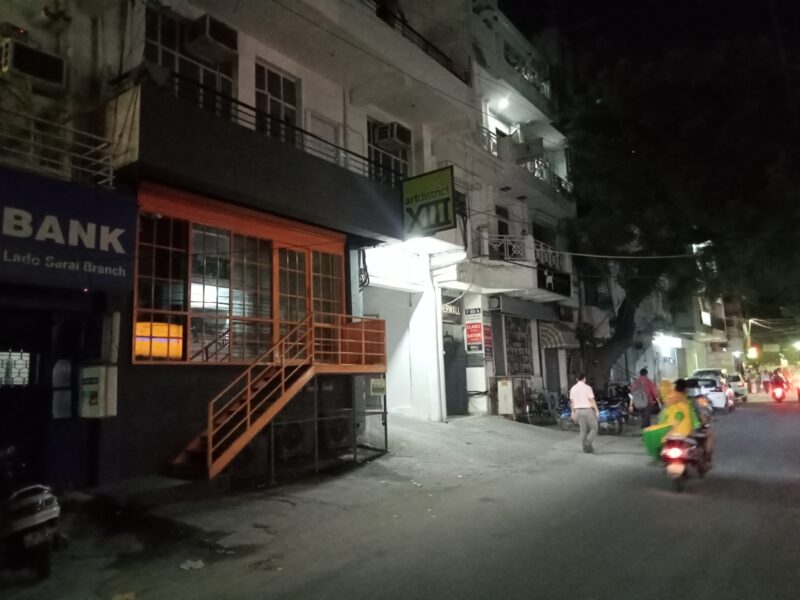When Vedant* started working at a reputed gallery to hang paintings, his salary was around Rs 7,000 a month. As he worked, he hung paintings, looked after the visitors, and was asked to serve tea to the caretakers of the gallery.
“The job involves hanging up the paintings. Apart from that, we are asked to do work that we should not be doing. Sometimes, it becomes very humiliating when the boss asks us to serve tea or do any other kind of menial job. All this when they pay peanuts”, he says.
Similarly, a security guard who lives at Chhattarpur and works in one of the complexes in Mehrauli, says that he earns Rs 13,000 a month. He has been working for the last five years in the complex and his salary has not been raised even once.
“Whenever I ask the employers to give me a raise, they say that I am getting enough. The job of a security guard is very difficult as he has to be present at his spot all the time. Besides, it is also very time consuming. This is not taken into consideration when I am paid”, he says.
A father of two who often struggles to make ends meet, he says he has no other option but to continue with this job. “At least I am earning this much. It is better than nothing. Given the situation these days in the job market, it is still better to have something”, he says. He adds that people there are very welcoming and are always kind to him but the payment remains a big issue that plays a major role in his life.
Kunal*, who also started as a painting hanger, serves in administrative office in All India Fine Arts & Crafts Society. An artist himself, he has presented his work in multiple exhibitions all over India. He chose to pursue art when he started working at an art gallery and has also done his Master’s from Gwalior.
Speaking about the condition of workers in art galleries, he says “Most of them come from very financially disadvantaged backgrounds. These are all fourth grade jobs that they are assigned and their salaries range from somewhere Rs 10,000-15,000. However, it also depends on the gallery they are associated with.”
“Workers have to be very careful as they do their jobs because the paintings are very expensive and if there is any damage to them, it is likely that they have to pay for it. However, it totally depends on the artist as well. If the artist is good, all is good”, he says. He adds that people coming from working class backgrounds in art galleries are at the receiving end from multiple directions: No matter who makes a mistake, it is they who have to take the blame.”
“There are issues of timings as well. Suppose if there is an exhibition at a particular time, and at the same time the worker has to be present at another gallery, then it becomes very difficult for him to be present everywhere. All of this is not taken into account whenever there is a blunder in the process”, he adds.
What makes the situation worse, he continues, is that there are no incentives at all for the kind of work they do. “It’s very unusual for workers to earn extra in these circles. It happens only when some artists pay the workers from their pocket, which is very rare; most of the time artists presume that workers are paid enough by their employers”, he says.

Snobbish attitude
Talking of his own situation as a worker-turned-artist, Kunal* emphasises that the world of art in Delhi is all about money and contacts. Those who come from socially backward backgrounds face a lot of difficulty to get some recognition.
“Unlike artists who come from affluent backgrounds, we have to think about spending on a painting. The cost of material incurred by an artist of a good acrylic painting is around Rs 10,000. How can someone who is earning very little pursue art?”, he asks.
He continues: “There are artists who beautify even the frames of the paintings and then present them at big exhibitions that require a lot of money. Deserving artists fail to gain this kind of community prestige because they don’t have resources. It does not matter how good their art is.”
Sneha*, who has been working as a freelance Public Relations professional for the last six years, says that the art scene in Delhi is all about marketing. “Artists tend to demand coverage in publications that are very renowned and mainstream. They do not understand that the quality of their work eventually decides where they are going to be featured. Moreover, they treat PR professionals as advertisement agents.
Sneha says artists fail to understand that PR professionals actually work as a mediator between artists, publishers and the audience. Sometimes, when a certain publication rejects their work and does not give it publicity, they refuse to pay the PR agent”, she says.
Speaking about power play and inter-connections in the industry, she says “There is a certain layer that decides which artist is good, and it is very likely that the so-called good artist comes from a very privileged background. You can only get buyers when you invest a lot. It is no brainer that these artists tend to create a monopoly in the business.”
She adds that quality of art barely matters because the equation of who really gets the brownie points for being a good artist is already decided. Even gallerists, she emphasises, tend to create a name for an artist they have close connections with – all of which is decided by money and social privilege.
She narrates a series of incidents where the artists refused to pay PRs any money because no coverage was published in major dailies of the country. “Journalists tend to cross-check everything. If the show is not very great, they will not keep it in the paper. Also, artists demand coverage in publications such as The Times of India that have stopped taking previews of exhibitions. I don’t really understand whether they don’t understand the process of public relations or are just keen on their work being featured on big platforms”, she says.
Sneha adds that the world of art and culture seems very glittery and full of possibilities to the outside world – where the dynamic cultural scene of India’s art takes shape – but a closer look at it reveals an ugly truth. At best, it is just business.
Names changed to protect identities*
Follow us on:
Instagram: instagram.com/thepatriot_in/
Twitter: twitter.com/Patriot_Delhi
Facebook: facebook.com/Thepatriotnewsindia





